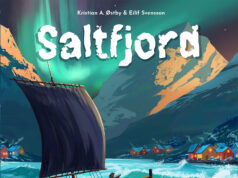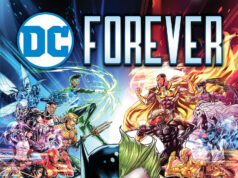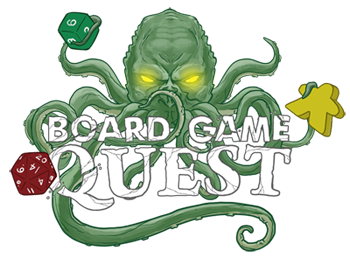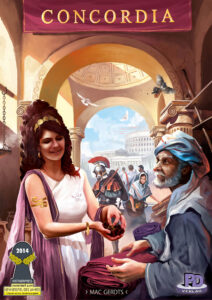 Getting to review games is an immense privilege that I have always cherished; however, getting to review tried-and-true classics in order to bring some of the best games to new audiences is the pinnacle of authorship.
Getting to review games is an immense privilege that I have always cherished; however, getting to review tried-and-true classics in order to bring some of the best games to new audiences is the pinnacle of authorship.
Concordia has been a revered game since its publication in 2013, and even with the recency bias of the hobby and its constant innovation, it still sits at an Overall Rank on BoardGameGeek of 26. Does this title still deserve this ranking in 2025, or has its age started to show?
Gameplay Overview:
In Concordia, players control a Roman dynasty aiming to solidify their foothold in the map’s given territories. Through the use of cards, players will complete certain actions: moving their colonists and constructing houses; producing goods or collecting Sesterii (money); placing new colonists or collecting Sesterii; selling goods for Sesterii; and so on. All of these actions are done through the use of starting cards that each player receives. As the game progresses, though, players will begin to purchase other cards for their deck.

These newly purchased cards are the meat of Concordia. Each card purchased not only has a completely new action associated with it (or an improved action based on your starting cards), but it also contains a new way for the player to gain Victory Points. For instance, if a player purchases a card with the Saturnus tag on it, then that player will receive one Victory Point (at the end of the game) for each province containing one of their houses.
The game is a combination of action efficiency and proper card drafting. As the game progresses, the general path you need to take to score points becomes clearer and clearer, and yet to achieve victory, you may need to purchase some cards with Victory Point conditions that do not score you as many points as others. Plan well, be efficient, and carefully navigate the map’s region to win at Concordia.

Game Experience:
In my opinion, even in today’s crowded Euro landscape, Concordia stands on a pedestal of excellence all on its own. It rivals the best titles in the Euro space, surpassing even the likes of Ark Nova, Dune: Imperium, Terraforming Mars, and Great Western Trail. Its simplicity and intricacy of design parallel the likes of the best Reiner Knizia titles, and the tightness of its efficiency makes Terra Mystica seem like a loose design. On top of all of that, its freshness and variety on each play is unparalleled in a game this rules-light.

Let’s start by discussing the simplicity of the rules. Each card players have in their starting deck and that they draft later in the game has the action written out in plain English. Yes, the Mercator card simply says “Mercator” at the top, but instead of filling the card with generic merchant art, the card instead spells out what the action does, making reference sheets completely unneeded. Even the scoring conditions of the cards are accompanied by a reminder symbol. At worst, these symbols need to be looked up once a game, and at best, they are intuitive enough for seasoned gamers to internalize on their first play.
Next, the tightness and intricacy of design. As I alluded to in the rules overview, this game teeters between two conflicting ideas: purchasing cards that increase the power and value of your actions, and purchasing cards that will give you the most points at the end of the game. Again, looking at the Mercator card, scoring two points for each house you have on a given resource type doesn’t directly tie itself to trading goods. But, because each card plays into one another so well, and each scoring opportunity requires (nearly) every action in order to be most efficient, these design philosophies that seem conflicting with one another are not at odds at all: in fact, they reinforce each other, just not in a black-and-white way.

Finally, the variety presented in the game. Upon set-up, each city on the board will be given a semi-random resource. In addition, the purchasable cards are also shuffled in a semi-random way. The semi-randomness here is key: it prevents game-breaking cards from coming out too early, and it prevents certain regions on the board from being “locked out of”, thus preventing a chokehold on a particular resource. While this may not seem like a ton of randomness at setup, these few tweaks keep each game feeling fresh in ways few other games can capture.
My biggest frustration with the game is the proposed first player experience. All of the scoring of Concordia happens at the end of the game; however, the rules suggest that when new players are at the table, after a certain number of turns, an intermediate, temporary scoring phase happens so players can gauge how they’re doing. This system is flawed in many ways: it slows the game down; it gives players an inaccurate leader to attempt to bash; and it can give players a false sense of confidence or failure of their current trajectory and/or the efficacy of particular scoring conditions.

Final Thoughts:
Concordia deserves to be on the Mount Rushmore of board gaming. It is a great entry-level game, and a phenomenal game at high-level play. Its rules are simple, and its strategic depth is unmatched at this level of rules complexity. If you have never tried Concordia, you need to give it a chance. It may not have the flashiest art or deluxified components, but you will never find a game with this much beauty in its design.
Final Score: 5 Stars – Mediterranean Beige Trading at its absolute best.
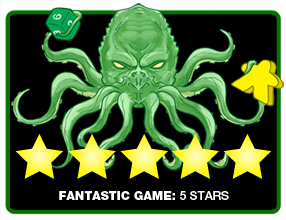 Hits:
Hits:
• Simple rules, intricate design
• Highly variable set-up
• Low luck, high skill
Misses:
• Art is subjectively boring
• First game bizarre scoring condition
• Why a scoring track?









